calsfoundation@cals.org
White County
| Region: | Central |
| County Seat: | Searcy |
| Established: | October 23, 1835 |
| Parent Counties: | Independence, Jackson, Pulaski |
| Population: | 76,822 (2020 Census) |
| Area: | 1,034.08 square miles (2020 Census) |
| Historical Population as per the U.S. Census: | |||||||||
|
1810 |
1820 |
1830 |
1840 |
1850 |
1860 |
1870 |
1880 |
1890 |
1900 |
|
– |
– |
– |
929 |
2,619 |
8,316 |
10,347 |
17,794 |
22,946 |
24,864 |
|
1910 |
1920 |
1930 |
1940 |
1950 |
1960 |
1970 |
1980 |
1990 |
2000 |
|
28,574 |
34,603 |
38,269 |
37,176 |
38,040 |
32,745 |
39,253 |
50,835 |
54,676 |
67,165 |
|
2010 |
2020 |
|
|
|
|
|
|
|
|
|
77,076 |
76,822 |
|
|
|
|
|
|
|
|
| Population Characteristics as per the 2020 U.S. Census: | ||
| White |
65,237 |
84.9% |
| African American |
3,728 |
4.9% |
| American Indian |
368 |
0.5% |
| Asian |
623 |
0.8% |
| Native Hawaiian or Other Pacific Islander |
31 |
0.0% |
| Some Other Race |
1,737 |
2.3% |
| Two or More Races |
5,098 |
6.6% |
| Hispanic Origin (may be of any race) |
3,499 |
4.6% |
| Population Density |
74.3 people per square mile |
|
| Median Household Income (2019) |
$44,029 |
|
| Per Capita Income (2015–2019) |
$23,702 |
|
| Percent of Population below Poverty Line (2019) |
15.7% |
|
White County is the second largest county in land area in the state. Geographically, it is a microcosm of the state as a whole. The eastern half of the county is alluvial land that today is mostly used for farming and timber production. The western half of the county is rocky higher ground where much of the land is used for dairy and beef cattle ranching. The county seat, Searcy, contains the greatest population and number of industries of any town in the county. Even though the county was formed before statehood, its boundaries have altered little through time.
Southeastern White County is mostly farmland and lowland forests. The Little Red River flows northwest to southeast across the county and connects with the White River, which forms the eastern boundary of the county. Southwestern White County contains the northeastern-most extension of the Ouachita Mountains and is characterized by east-west trending ridges characteristic of the Ouachitas. The north-central and northwestern parts of the county contain the eastern terminus of the Ozark Escarpment. The southeastern half of the county can be further divided into two regions: in general, the land north of the Little Red River is lowland forests and farmland, and the area south of the Little Red River is the northern terminus of the Grand Prairie. Incorporated towns in White County are Searcy, Beebe, Bald Knob, Judsonia, Kensett, Bradford, Rose Bud, Letona, Pangburn, West Point, Higginson, McRae, Russell, Garner, Georgetown, and Griffithville.
Pre-European Exploration through European Exploration and Settlement
Evidence of human occupation of White County extends back some ten thousand years. Traces of Native American occupation can be found from all four major periods identified by archaeologists. Paleoindian, Archaic, Woodland, and Mississippian Period sites and artifacts are scattered throughout the county.
The first Europeans to reach what is now White County were likely with the Hernando de Soto expedition, which likely ventured into the area in 1541 but stayed only a few days. The next Europeans were likely French; two Spanish land grants given to Frenchmen in the late 1780s are located in the county. The first, in central White County, was to John Fayac (or La Bass), but documentary evidence of his actual occupation is sketchy. The second, in southeast White County, was to Francois Francoeur, who likely was the son of fur trader Joseph Francoeur, who first came to the area in the 1740s.
Louisiana Purchase through Early Statehood
The first American settlers are believed to have been John and Nancy Magness, who traveled down what has become known as the Old Southwest Trail from Wilson County, Tennessee, to reach White County around 1815. The Magnesses lived near what is today the town of Letona. The Southwest Trail entered the north-central part White County from Independence County, proceeded through the western half of the county, and exited near the settlement of El Paso. Later known as the Military Road (when Congress appropriated funds for improvements on the road in the 1830s), this road was the first major avenue for overland settlement in Arkansas and likely had been a trail used by Native Americans for centuries. The first post office in what became White County was established in 1831 along the Military Road west of Searcy.
White County was established by the Arkansas territorial legislature on October 23, 1835, by combining parts of Independence, Jackson, and Pulaski counties. No one is certain where the White County name came from. One opinion is that the county was named for the White River, which borders its eastern edge. Another opinion is that the county was named for Senator Hugh L. White of Tennessee, who was a Whig Party candidate for president in 1836.
Near the center of the county, a community developed around the White Sulphur Springs. On November 23, 1837, the state legislature designated this community the county seat and named it Searcy in honor of frontier lawyer and judge Richard Searcy of Batesville (Independence County), who had died in 1832 at the age of thirty-eight. The first courthouse was a log structure built in 1839, but various legal challenges resulted in years of wrangling over the ownership of the Searcy site. The issue was finally decided by the U.S. Supreme Court in 1851, and Searcy was finally officially the county seat.
Searcy was not located on the Military Road, and by the 1840s, north-south traffic had begun to shift from the western part of the county to the more central route through Searcy. The Military Road gradually fell out of favor, and by the time of the Civil War, military officers referred to it as “Old Military Road.”
The first cash crop in the county was likely cotton, and the earliest known cotton gin was located in the 1850s along Gin Creek between Searcy and the Little Red River.
Most settlers chose to live in the northwestern part of the county, which was generally hilly, rather than in the southeastern part, which was mostly swampland.
Civil War through Reconstruction
The 1860 federal census reported the population of White County as 6,881 white citizens, with 1,422 enslaved persons and three free Blacks. Jesse Cypert represented the county at the 1861 Secession Convention. According to the census completed the previous year, Cypert owned at least one enslaved person.
When Arkansas seceded from the Union, White County sent eight companies of men for the Southern cause. In May 1862, Union general Samuel R. Curtis arrived in the county from Batesville with his 12,000-man Army of the Southwest, intending to take Little Rock (Pulaski County). Curtis’s troops scoured the northern half of the county, while the locals south of the river hid or destroyed food and forage in an effort to starve Curtis’s army. A small skirmish was fought on May 17, 1862, on the Little Red River. Two engagements were fought on May 27, one at Big Indian Creek and another near Bayou Des Arc.
The most significant action occurred when a detachment of the Twelfth Texas Cavalry and local troops attacked a Union foraging party a few miles east of Searcy on May 19, 1862. Locally known as the Action at Whitney’s Lane, the conflict involved about 100 Union troops and 150 Confederate cavalry. Union losses were twenty-three killed and several dozen wounded. Confederate losses were four killed and a handful of wounded. Whitney’s Lane was not a large battle, but it did have significant impact. Curtis had found his supply lines from Missouri constantly under attack, and adequate provisions were not reaching his troops. Supply boats that were to come up the White River never reached him. Almost daily guerrilla warfare, the removal of food and forage from his path, the timely arrival of Texas troops in the area, and incessant rains forced Curtis to abandon his goal of taking Little Rock and to march to Helena (Phillips County) on the Mississippi River instead. It would be more than a year before Little Rock would be captured by Union forces. Other engagements related to the campaign took place at the Little Red River and Fairview.
In 1863, the Union gunboat Cricket went up the Little Red River and captured the Confederate steamboats Kaskaskia and Tom Sugg. On the return trip down the river, Rebels began firing on the Cricket from the bank near West Point. The Cricket returned fire, as did the Lexington, another Union gunboat that had made its way up the river to near West Point. The Rebels scattered, but the cannon fire damaged several homes in the town of West Point. A scouting mission to Searcy in May 1864 led to a small skirmish with another engagement the following month at the Little Red River. In August 1864, a Union force of 3,000 under the command of Brigadier General Joseph R. West came from Little Rock into White County but engaged only in small skirmishes. His forces destroyed eleven kettles and sixty evaporating vats that the Confederates were using to produce two bushels of salt per day in the Liberty Valley area east of what is now Bald Knob.
During Reconstruction, the most significant event to occur in the county was the construction of the St. Louis, Iron Mountain, and Southern Railroad (earlier called the Cairo and Fulton) in 1872. The railroad bypassed the county seat of Searcy to the east by several miles, much to the consternation of local officials. The railroad ushered in a new era of commerce in the county as well as the modern town structure. Several towns formed along the railroad: Bradford, Russell, Bald Knob, Kensett, Garner, McRae, and Beebe. The timber industry became the largest single employer. Migration of people from the north into the county was reflected in the growth of Judsonia during the 1870s. The White County Courthouse, built in 1872, is currently the oldest courthouse in the state still functioning for its original purpose. (The Crawford County courthouse in Van Buren has outside walls that are older, but that structure was completely gutted by fire and rebuilt. In contrast, the White County Courthouse remains on the outside and inside as it was in the 1870s, with only the addition of north and south wings to alter its original appearance.)
Violence also reared its head in the county during Reconstruction, when the Ku Klux Klan established a group that included some of White County’s most notable citizens at the time. Governor Powell Clayton sent a spy, Albert Parker, to Searcy in 1868 to pose as a horse and livestock buyer to get as much information as possible on the Searcy Klansmen. The Klansmen grew suspicious of Parker, ultimately murdering him and putting his body in a well. Clayton established a $500 reward for the suspects: local newspaper editor Jacob Frolich and former Confederate general and Searcy lawyer Dandridge McRae. Both fled the state for a time. Several other individuals were implicated in the crime. All were later tried by a jury of locals and acquitted. Clayton stated that he regretted that the trials had not been conducted by a military commission in which where a guilty verdict would have been more likely.
Post Reconstruction through the Gilded Age
In 1876, a religious cult called the Cobbites existed for a short period south of Searcy. Bizarre behavior by members of the cult led to attention from local citizens, but after the murder of a man from Searcy, a mob attacked the group. Several Cobbites were killed and others arrested.
The first institution of higher education in White County began operations in 1871 with the founding of Judson University. Established by northern Baptists, the university eventually failed but not before helping establish the town of Judsonia.
At least two incidents of extrajudicial racial violence occurred in the county in the late nineteenth and early twentieth centuries. James Bailey was killed by a mob in 1891 after allegedly attacking a white woman. In 1900, schoolteacher S. A. Jenkins was killed after being accused of multiple robberies.
Early Twentieth Century through Modern Era
The United States entered World War I on April 6, 1917. On the following day, a statue of a Confederate soldier was erected on the White County Courthouse square, and speakers entreated the young men to enlist. While the effects of this war on the people of White County were small compared to World War II, there were at least twenty-five soldiers from White County who gave their lives in this war.
From 1890 to 1950, White County was the center of strawberry production in the United States. By 1935, the A. W. Hoofman farm alone shipped out between five and six million plants to practically every state in the Union, and also Mexico, Cuba, and China. The growers shipped out well over 1,500 train cars of berries, and the industry as a whole brought $1,600,000 into the county for growers, cappers, pickers, and box makers.
During the Great Depression, Yarnell’s Ice Cream began in 1933 when Ray Yarnell bought Southwest Dairy Products, originally founded by Ben Grisham. Yarnell’s Ice Cream was Searcy’s most notable industry until it abruptly ceased operations in 2011. Purchased in 2012 by Schulze and Burch Biscuit Co., Yarnell’s began producing ice cream again the same year.
The record low for the county’s economy during the Great Depression was in 1933 when there were 4,627 unemployed men, 973 men on Civil Works Administration projects, and forty-five war veterans placed in government jobs. Other New Deal agencies active in White County included the National Recovery Administration, the Rural Resettlement Administration, the Works Progress Administration (WPA), the Agricultural Adjustment Administration, the Emergency Relief Administration, and the Reconstruction Finance Corporation. In addition, the Civilian Conservation Corps employed young men from White County for projects in Montgomery County. The WPA constructed several buildings in the county, most notably jails in the small communities of Russell, McRae, and Beebe. The jails were listed on the National Register of Historic Places.
After Japan bombed Pearl Harbor in 1941 and the United States entered World War II, White County citizens participated in the war effort in a variety of ways. The total number of enlistees is not known but the names of 142 White County residents who died during World War II are listed on the granite memorial on the courthouse lawn. Men from White County served in all branches of the armed forces. Women from the county served in the Women’s Auxiliary Army Corps (WAAC) and in the Women Accepted for Volunteer Emergency Service (WAVES). On the home front, a price and rationing board was established to ration tires, shoes, gasoline, automobiles, and stoves. Every available piece of scrap iron, copper, zinc, lead, aluminum, and rubber was collected for the war effort. Even old keys were collected.
Nineteen White County residents were killed in the Korean War and thirteen in the Vietnam War, with three other men listed as missing in action.
During the Depression, the U.S. Department of Agriculture began programs that paid farmers to keep some fields out of production with the intention of raising prices for farm produce. These Soil Bank programs were expanded after World War II. With much cropland out of production, many farm workers left the county to look for work elsewhere. As a result, county population dropped by more than 5,000 over the decade of the 1950s. From the 1920s to the 1980s, there was a gradual shift from cotton and strawberries to soybeans and rice as primary cash crops. Most of the remaining farmland in the eastern part of the county today is planted in soybeans or rice. Sod farms and vineyards began occupying some of the land formerly planted in other crops.
During the 1960s, industries began to locate in Searcy. These included the Thompson Chicken Hatchery, Bingham’s Rollers, Frosytaire Frozen Foods, Remington-Rand, Searcy Steel, Birdseye Foods, Speed Queen, and others. The U.S. Department of Defense constructed several Titan II missile silos in the county in the early 1960s. An accident at one site in 1965 killed fifty-three workers.
In the twenty-first century, the largest single employer in the county is Walmart Inc., which operates two stores and two regional distribution centers in Searcy. Other large employers include Danfoss, Bryce, First Security Bank, and Land O’Frost. There are eight public school districts in White County: Riverview, Searcy, Bradford, Bald Knob, Central, Pangburn, Rose Bud, and Beebe. White County Medical Center serves the region from two campuses in Searcy.
Education and Attractions
Harding College was founded in Morrilton (Conway County) in 1924 and moved to Searcy in 1934, purchasing the former campus of Methodist-related Galloway College. This Church of Christ–affiliated institution became a university in 1979 and became the largest private higher education campus in Arkansas. The student population at Harding has a significant impact on the local economy.
The Junior Agricultural School of Central Arkansas was founded in 1927 at Beebe in southern White County. It is the oldest two-year public institution in Arkansas. Originally an independent institution, its administrative functions were transferred to Arkansas State College, now Arkansas State University (ASU) at Jonesboro (Craighead County), in 1955 and later became Arkansas State University–Beebe. In addition to Beebe, it has education centers at the Little Rock Air Force Base in Jacksonville (Pulaski County), in Searcy, and in Heber Springs (Cleburne County).
Farming has declined, but the development of wildlife management areas and refuges in the eastern half of the county serves to protect the environment and bring in duck, deer, and squirrel hunters, as well as fishermen. Henry Gray Hurricane Lake Wildlife Management Area, Steven Wilson Raft Creek Bottoms Wildlife Management Area, and Bald Knob National Wildlife Refuge attract many sportsmen, and trout fishing is a major attraction on the Little Red River below Greers Ferry Dam near Pangburn.
The White County Historical Society recreated an 1880s farmstead and crossroads community in the city of Searcy. Called Pioneer Village, the project includes the Garner Railroad Depot, Gordon Log Cabin, the one-room Little Red Schoolhouse, and several other buildings from the late 1800s. Other attractions include the Searcy Events Center and Sports Complex, the Black House (1860s) art gallery, and the annual White County Fair, which is billed as the largest county fair in the state based on gate admissions. Multiple sites in the county are listed on the National Register of Historic Places, including the Grand Army of the Republic Monument in Judsonia and the Morris House.
Famous residents of White County include Kensett-born U.S. Representative Wilbur D. Mills, musician Beth Ditto, former federal judge Harry Claiborne, and harmonica player Lonnie Elonzo Glosson. Marion Monden Noble, an American participant in the Spanish Civil War and lifelong communist, was born in the county in 1911.
For additional information:
Muncy, Raymond Lee. Searcy, Arkansas: A Frontier Town Grows Up with America. Searcy, AR: Harding Press, 1975.
White County Heritage. Searcy, AR: White County Historical Society (1962–).
White County Historical Society. http://www.argenweb.net/white/ (accessed November 3, 2022).
Scott Akridge
White County Historical Society
Revised 2022, David Sesser, Southeastern Louisiana University
 Big Indian Creek, Skirmish at
Big Indian Creek, Skirmish at Cobbites
Cobbites Des Arc Bayou Expedition
Des Arc Bayou Expedition Judson University
Judson University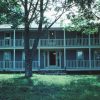 Morris House (White County)
Morris House (White County) Neel, Margarete Ethel
Neel, Margarete Ethel Titan II ICBM Launch Complex Sites
Titan II ICBM Launch Complex Sites Titan II Missiles
Titan II Missiles Antioch Cemetery
Antioch Cemetery  Antioch Street Scene
Antioch Street Scene  "Arkansas Hard Luck Blues," Performed by Lonnie Glosson
"Arkansas Hard Luck Blues," Performed by Lonnie Glosson 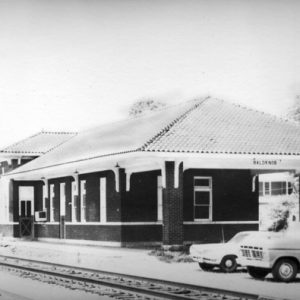 Bald Knob Train Depot
Bald Knob Train Depot  Beebe Jail
Beebe Jail  Beebe Street Scene
Beebe Street Scene  Beebe Train Depot
Beebe Train Depot  Benjamin Clayton Black House
Benjamin Clayton Black House  Entering Denmark
Entering Denmark  Bill Dickey
Bill Dickey 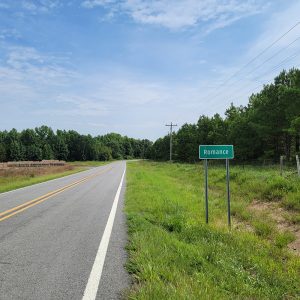 Entering Romance
Entering Romance  Gum Springs Street Scene
Gum Springs Street Scene 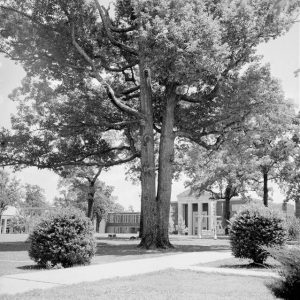 Harding University
Harding University  Judson University
Judson University  Judsonia Army Band Performance
Judsonia Army Band Performance  Judsonia Hat Shop
Judsonia Hat Shop  Judsonia Strawberry Wagons
Judsonia Strawberry Wagons 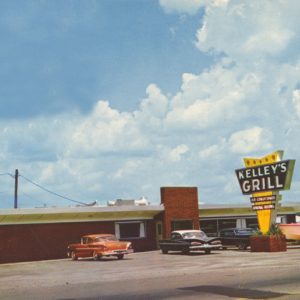 Kelley’s Grill
Kelley’s Grill  Kensett Street Scene
Kensett Street Scene  Little Red River
Little Red River  Logging in White County
Logging in White County  Pangburn Telephone Operator
Pangburn Telephone Operator  Rio Vista Depot
Rio Vista Depot  Smyrna Methodist Church
Smyrna Methodist Church  White County Courthouse
White County Courthouse  White County Map
White County Map 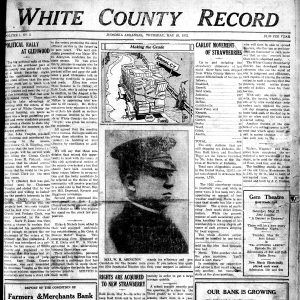 White County Record
White County Record  Yarnell Ice Cream Company
Yarnell Ice Cream Company  Yarnell Ice Cream Company
Yarnell Ice Cream Company 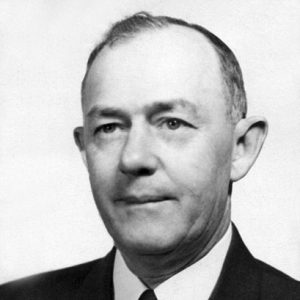 Ray Yarnell
Ray Yarnell 



Comments
No comments on this entry yet.